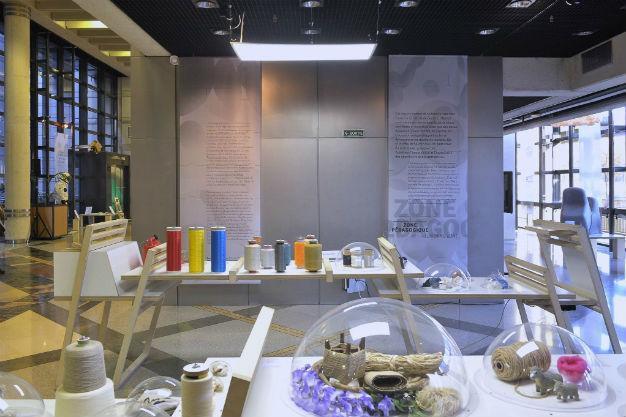Futurotextiles exhibition to explore potential of new fabrics
Nazlan Ertan – İZMİR
 For Caroline David, the director of the French Institute in İzmir, the future of textiles may be just as interesting as and definitely more diverse than the past and present.
For Caroline David, the director of the French Institute in İzmir, the future of textiles may be just as interesting as and definitely more diverse than the past and present.David, a Parisian who spent many years in Lille, in the north of France, has first-hand experienced on how the textile sector has been badly hit by successive crises and as the old continent’s textile production advantage shifted to other parts of the world. Rather than lament the loss of a glorious past, she focused on the technological and creative potential of textiles, or new fibers and new uses as a source of innovation – an idea that gave birth to an ever-evolving exhibition called “Futurotextiles” that has been traveling the world for the last decade.
The “Futurotextiles” Exhibition, which has traveled from Shanghai to Milan, will begin at İzmir’s Art and Sculpture Museum at Kültürpark on May 27. A second part (textiles and lights and optical fibers) will be at the exhibition space at the French Institute. The whole exposition was previously displayed at Cermodern Ankara in April and May, and, in 2007, in Istanbul, shortly after it was launched in Lille in 2006.
David, the curator of the exhibition, said she has actively worked to adapt it to Turkey in general and textile-producing İzmir in particular. Aware of İzmir’s role as the “capital” of wedding gowns of the country and the region, David included two wedding gowns which are “illuminated from within” in the exhibition. One of them is designed by the students of İzmir Ekonomi University; the dress, with sharp forms and lights inside, is called “Renewed Romance.”
New materials, ultra-light textiles and surprising ways of what can be done can be seen in the two-part exhibition. The first part is what David calls the pedagogic part, where tiny fragments of fabrics made from corn to coffee can give rise to a new fiber, thread or fabric. These fabrics appear to be straight from a utopian world in a science fiction novel in which the remains of coffee or milk are never wasted.
“These are just possibilities of the vast universe of creation. Perhaps the materials from those fabrics will be developed in the future or perhaps they will be too costly to be explored further,” David said.
The second part is precisely where the diverse uses of the “new textiles” teases spectators and makes them aware of the potential. Taking center stage are a sumptuous red dress, made of banana fibers, but strangely reminiscent of Japanese designer Issey Miyake’s pleats collection, a “Little Black Dress” made of recycled tape or a chic handbag with a strip of optical lights.
But it is not only about fashion.
“Textiles are not simply the materials of the clothes that we put on. There is a whole diverse world of fibers that extend from the medical world to sports,” David said. The exhibition gives striking examples of how textiles can evolve from erotic (aphrodisiac sheets, of all things!) to medical (tissue engineering that may replace skin or cartilage).
Underwear that would help women battle cellulite is imaginable enough, but a Psyche T-shirt that is equipped with discreet censors that records the wearer’s heart rate and breathing or textiles that would reduce oxygen consumption by 5 percent for swimmers? Or WELLTEX, for well-being addicts, which means your clothes, equipped with fragrances and microfibers, will give you a positive aura?
“Europe is no longer a producer of textile, but it has become an area of innovation for developing new uses of textiles from protection to sports, from construction to well-being,” David told the Hürriyet Daily News in her office at the French Institute in İzmir. “Textiles are everywhere and they are evolving fast. Breaking down the boundaries between sectors is crucial. Tennis rackets and motorcycle helmets are also part of Futurotextiles.”
















